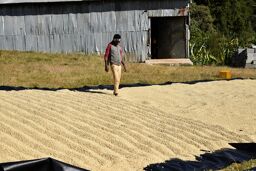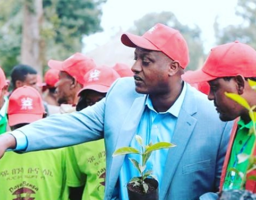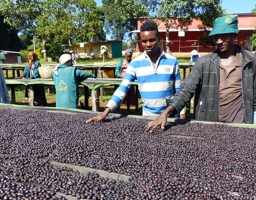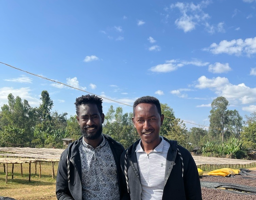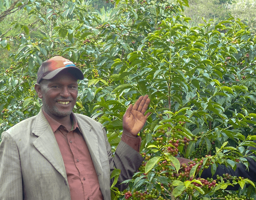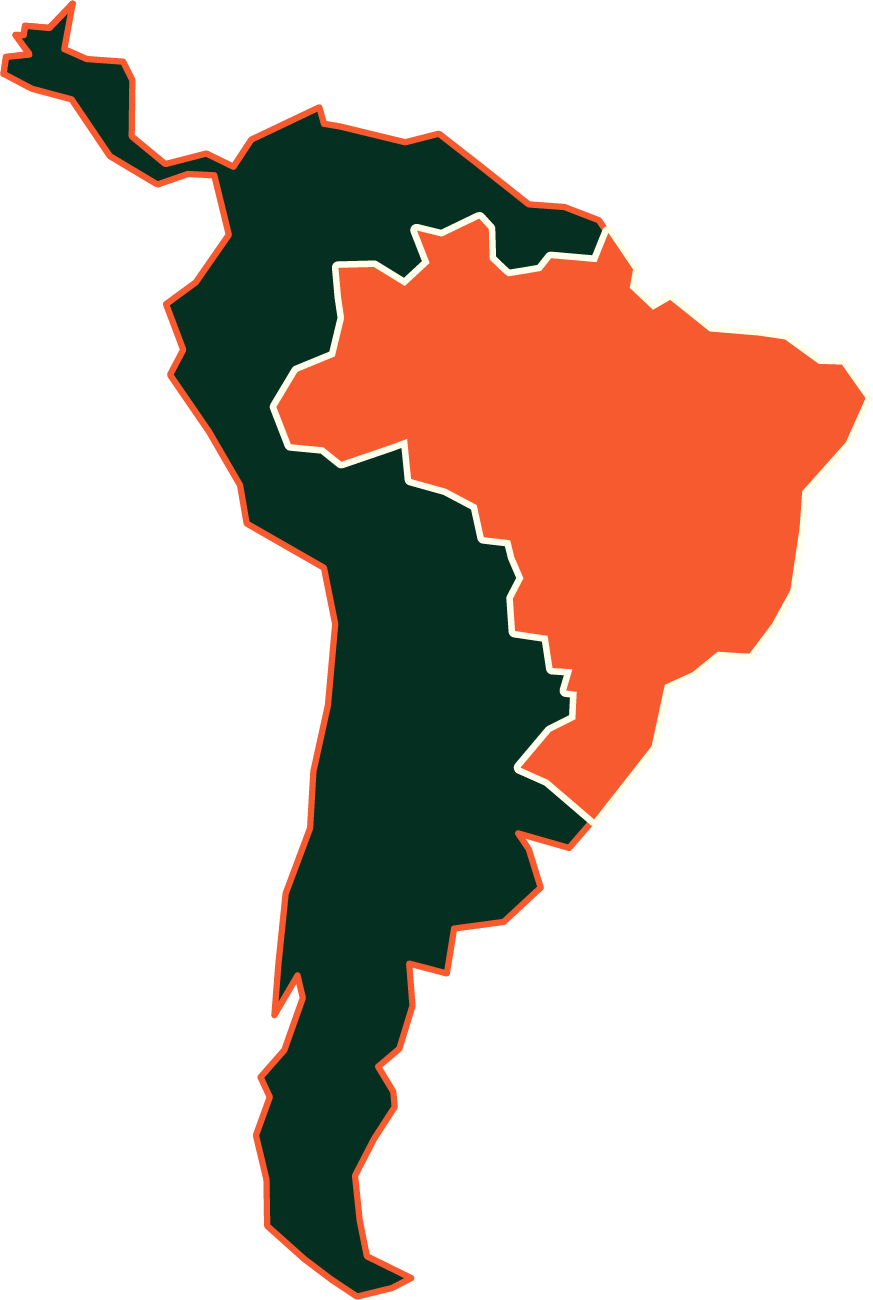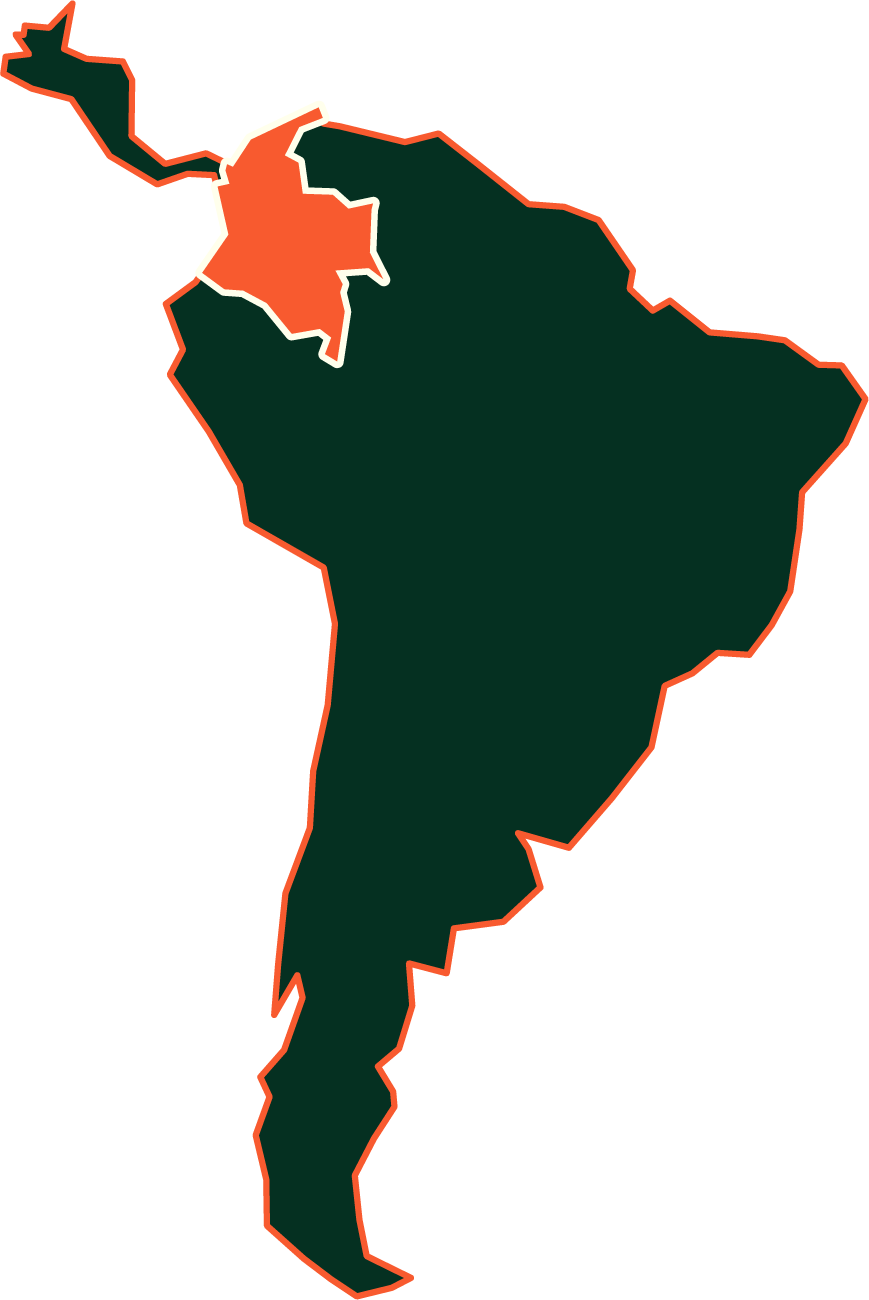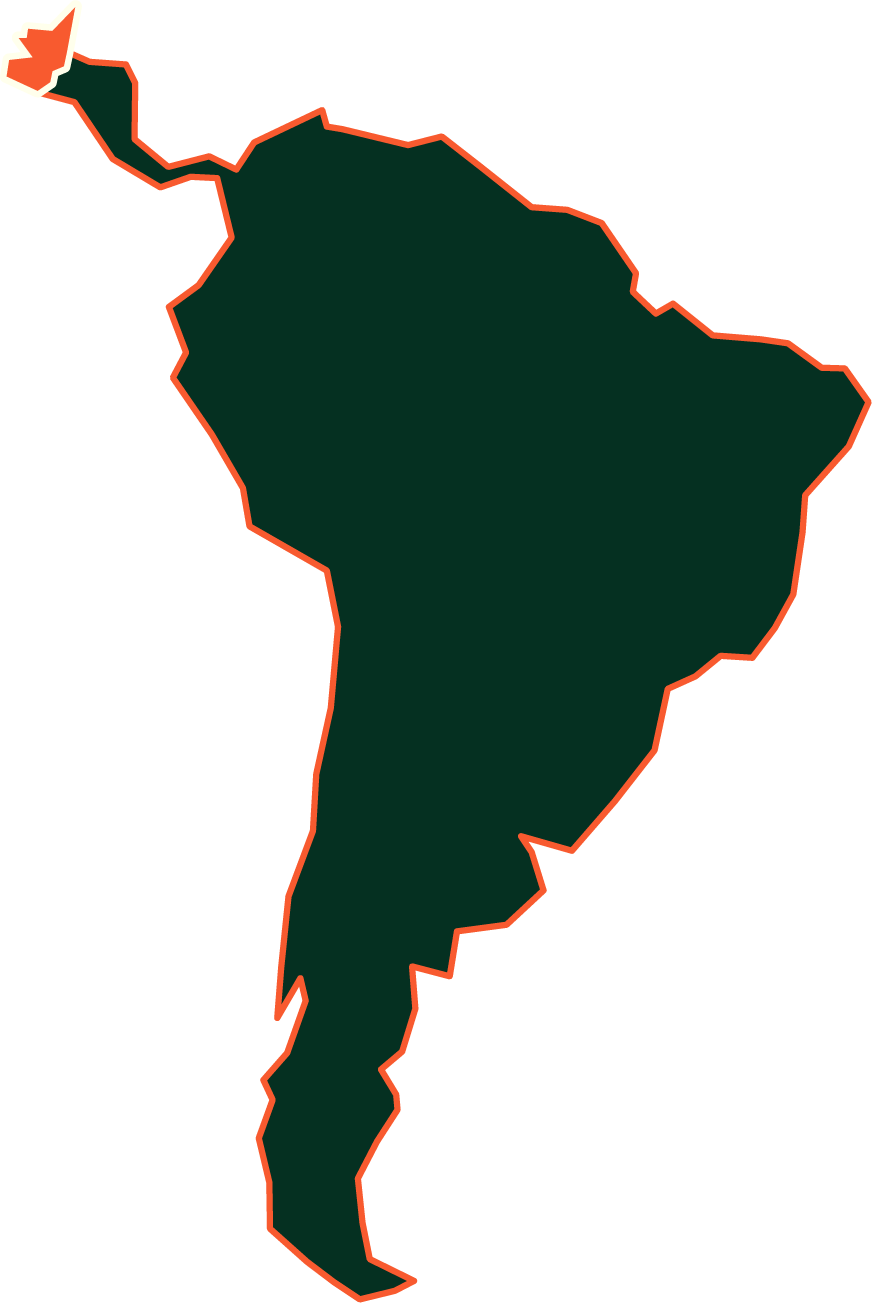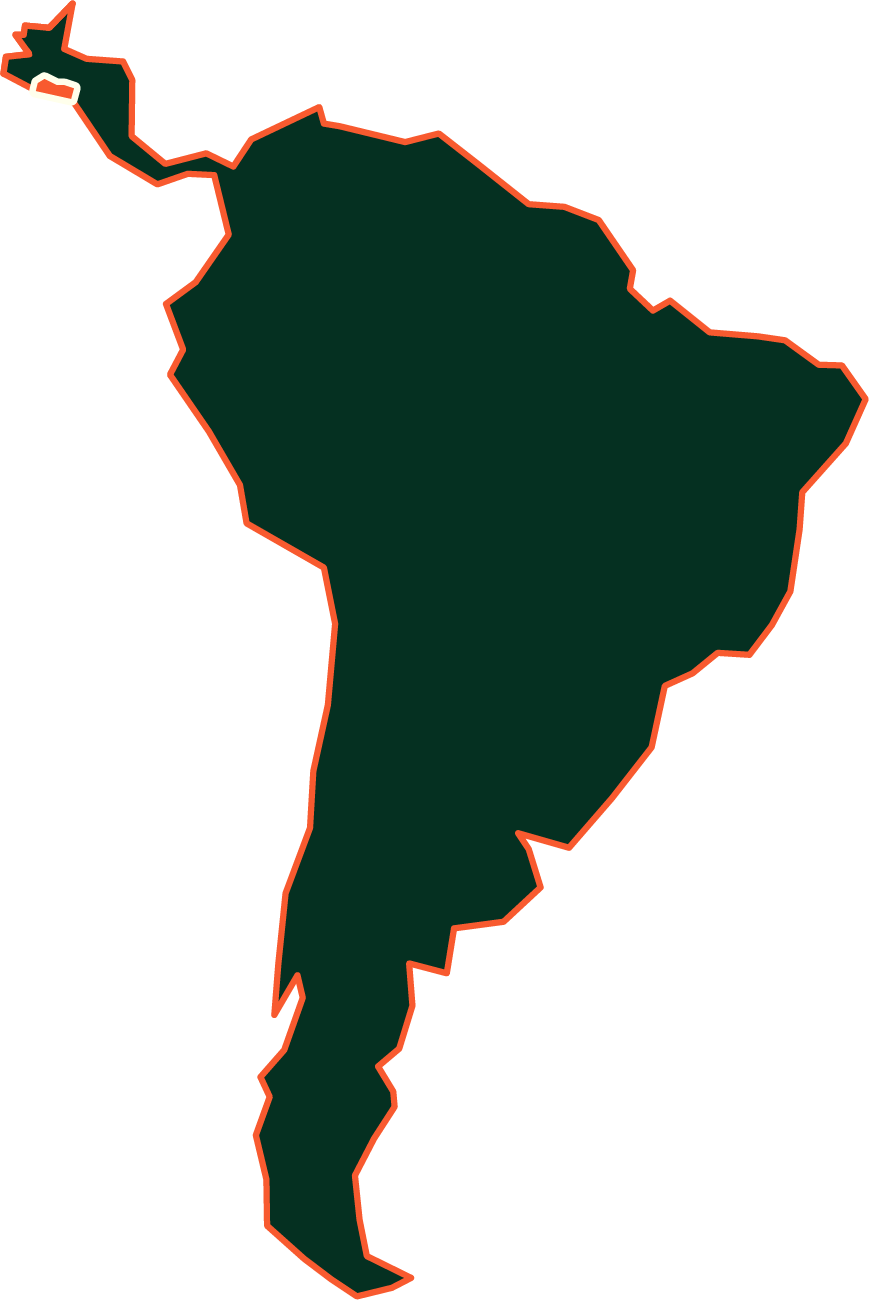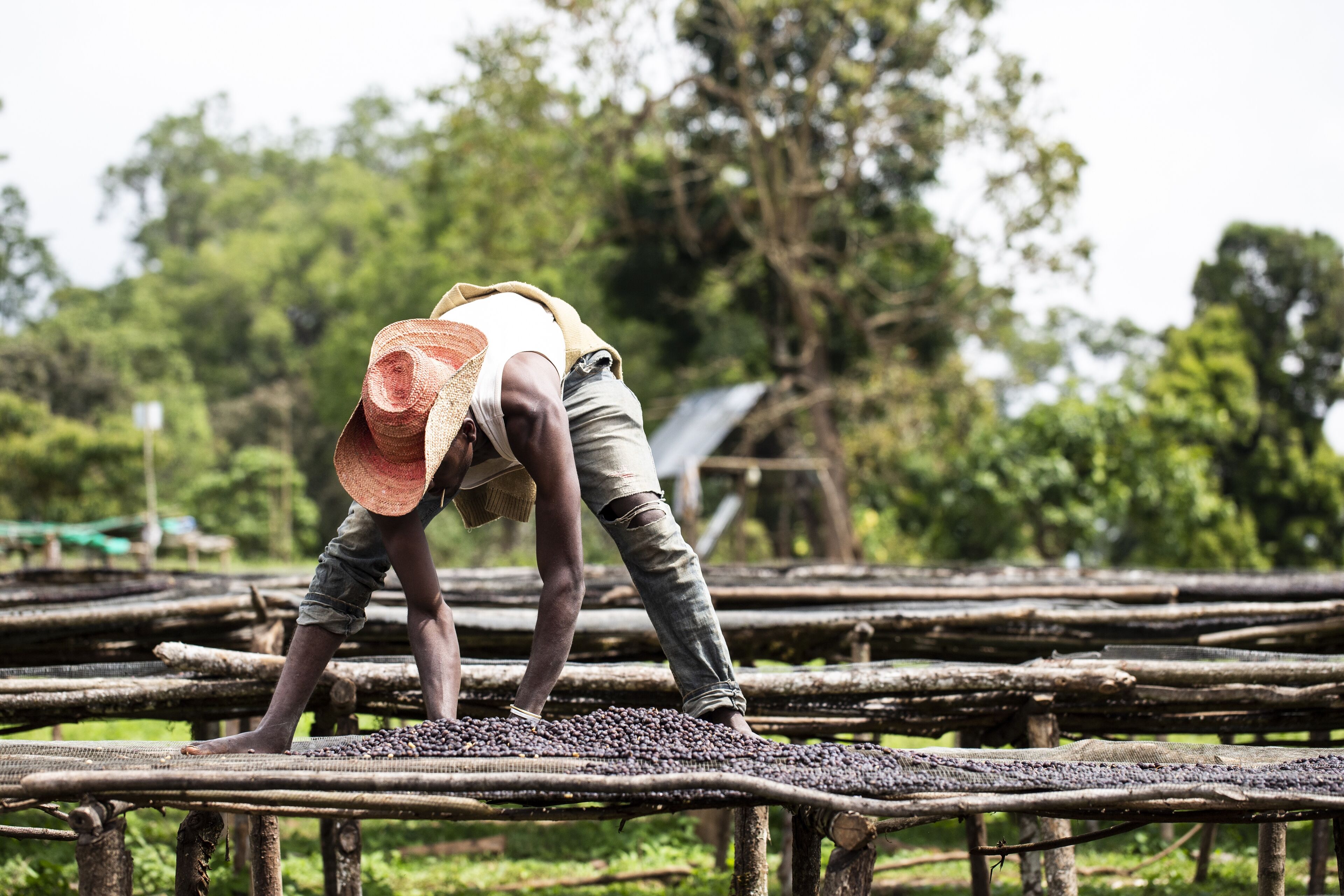
Ethiopia
Steckbrief
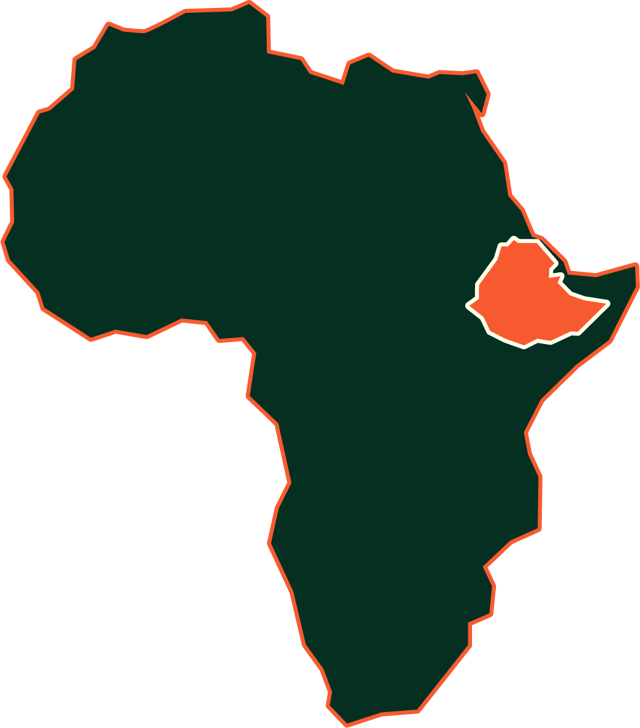
Hauptstadt
Addis Abeba Fläche für Kaffee
590.000ha Durchschnittliche landwirtschaftliche Fläche
5ha Geografie
Highlands and primary forest Erntezeit
October - January Anzahl der Kaffeeproduzenten
15000000 Anzahl der Menschen, die von der Kaffeeindustrie leben
25000000 Anzahl der Ernten pro Jahr
1 Prooduzierte Säcke pro Jahr
8300000 Hauptsorten
74110, 74112, 74140, Geisha, Heirloom, Wush wush
Kaffeeanbaugebiete
Klicke auf den Bereich, den Du Dir anschauen möchtest

West Arsi
Arsi is a region of the Ethiopian highlands culminating in Mount Chilaro and Mount Gugu. The terrain forms the southern end of the Great Rift Valley between the Bale Massif and the Amhar Mountains. To the northwest, the province is bordered by the Great Rift Valley and its lakes, notably Lake Coca and Lake Ziway on the Awash River.

Guji
Die Ursprünge des Kaffees in Guji reichen mehrere Jahrhunderte zurück, da wilde Sorten in den Wäldern der Region natürlich wachsen. Die lokalen Gemeinschaften, die hauptsächlich der Volksgruppe der Oromo angehören, nutzten den Kaffee in ihren traditionellen Praktiken, lange bevor er kommerziell genutzt wurde.
Lange Zeit war die Bezeichnung Guji in der Bezeichnung Sidama enthalten. Um die Qualität des hier erzeugten Kaffees besser zu kennzeichnen, wurde diese Bezeichnung in den 2000er Jahren von den äthiopischen Behörden getrennt. Diese neue Bezeichnung ermöglicht es, die Rückverfolgbarkeit der äthiopischen Kaffees zu verbessern und vor allem ihre Qualität in Bezug auf Geschmack und Typizität in der Tasse besser widerzuspiegeln.
Heute werden in der Appellation Guji einige der besten Kaffees der Welt angebaut. Der Kaffee ist hier eine uralte Kulturpflanze, die auf hügeligen Hochebenen in einem dichten Wald oder Halbwald angebaut wird, wo die Vielfalt der endemischen Arten den Kaffeebäumen optimalen Schatten spendet und zur Fruchtbarkeit des Bodens beiträgt.

Harrar
The Harrar region, in eastern Ethiopia, is characterised by its high plateaux and hills with a semi-arid climate. This historic area is famous not only for its fortified town, a UNESCO World Heritage Site, but also for its unique coffee. Harrar coffee is renowned for its rich aroma, fruity notes and balanced acidity, offering a remarkable harmony of leather and dried fruit aromas in the cup.
Harrar's coffee heritage is deeply rooted in local culture, with growing and processing practices handed down through generations.
These traditional methods contribute to the signature flavour of the region's coffee. Although Harrar's economy remains largely dependent on coffee production, the sector has seen a decline in recent years, facing competition from the more lucrative qat crop. Despite its increasing scarcity, Harrar coffee retains its popularity thanks to its organoleptic profile.
Coffee production in Harrar is mainly carried out by small family farms in a magnificent landscape where coffee trees are planted in orchards and grown alongside other crops.

Jimma
Jimma is a land of coffee origins. This appellation benefits from a rich natural environment where coffee grows mainly in the shade of large endemic trees, in the heart of the forests. The coffee produced here offers fine quality cups and an inspiring agricultural model. Yet this appellation has been a little slow to join the international speciality coffee scene. The work of local producers and the organisation of these coffee growers has revealed the potential of Jimma coffees, ensuring traceability and quality.
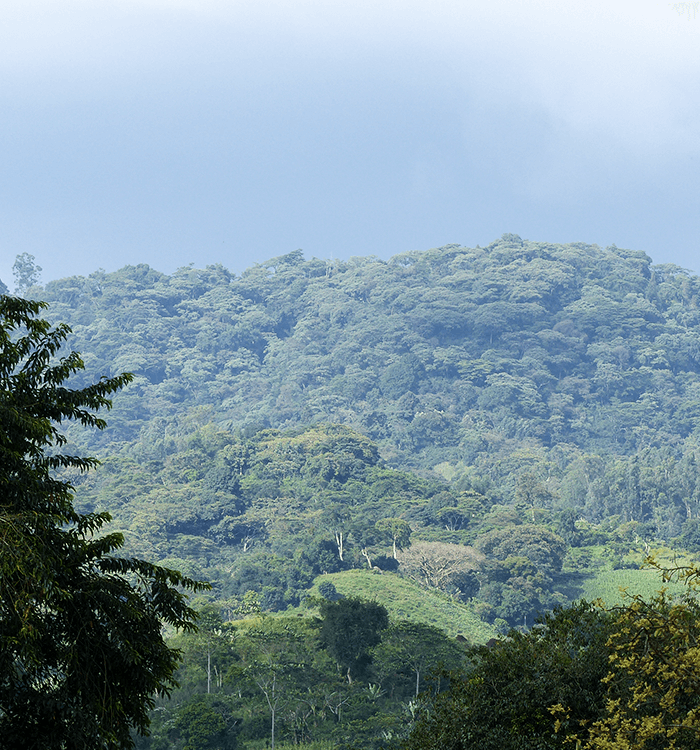
Kaffa
Well-known for its natural biodiversity and Arabica coffee, Kaffa has been designated a biosphere reserve by UNESCO. Tropical forests cover most of Kaffa. It is said that the Kaffa people of south-west Ethiopia were the first to cultivate coffee. The administrative town is known as Bonga.
The best-known varieties, originally from Kaffa, are Geisha and Wush wush. A little anecdote: the village of Buni (Decha district of Kaffa) is said to have given rise to the Amharic word Buna or Arabic Bun, meaning coffee. This region is famous for its spices (pepper, maniguette, etc.) and honey. A product which, like coffee, is closely associated with high-altitude tropical forests.

Sidama
The area covered by the Sidama appellation is very large, stretching over 500 km: the coffees have very different profiles! Sidama is the name of the appellation, but above all it is the name of the people of southern Ethiopia. Sidamo is a negative term used by people from the north to refer to the Sidama people of the south.

Yirgacheffe
The Yirgacheffe appellation covers a limited area. It is characterised by low production volumes but high perceived quality. Yirgacheffe is the name of a town with a population of several tens of thousands. The production areas are Yirgacheffe, Kochéré, Wenago and Gelena Abaya.
Erntezeiten
| Region | Januar | Februar | März | April | Mai | Juni | Juli | August | September | Oktober | November | Dezember |
|---|---|---|---|---|---|---|---|---|---|---|---|---|
| West Arsi | ||||||||||||
| Guji | ||||||||||||
| Harrar | ||||||||||||
| Jimma | ||||||||||||
| Kaffa | ||||||||||||
| Sidama | ||||||||||||
| Yirgacheffe |

Der Kaffeesektor im Land
Sektor
Die Branche ist nach den verschiedenen Produktionsstufen unterteilt: Produzent, Einkäufer und Exporteure. Die Produzenten liefern ihre Kirschen an Einkäufer (akrabi), die über die notwendigen Wasch- und Trocknungsanlagen zur Verarbeitung von Kirschen und Pergament verfügen. Jeder Einkäufer verfügt über eine Lizenz für einen bestimmten Woreda (Bezirk). Die Produzenten trocknen auch einige Kirschen für den Verkauf an Einkäufer von Schalen (djenfel), um natürliche Partien der Klassen 4 und 5 zu erzeugen. Einige haben ihre eigenen Stationen und verarbeiten ihre eigenen Kirschen; dies sind in der Regel Produzenten, die mehr als 35 Hektar Land besitzen.
Die Einkäufer liefern ihre Partien dann an den Auktionsmarkt ECX (Ethiopian Commodity Exchange) oder direkt an Exporteure im Rahmen eines vertikalen Integrationsvertrags. Jeder Produzent, Einkäufer und Exporteur muss eine eigene Lizenz besitzen. Es ist möglich, dass eine Person alle Lizenzen besitzt.
Ausländer sind nicht berechtigt, eine Lizenz zu beantragen, können aber als Vertreter (Commercial Representative Office, CRO) tätig werden. Personen mit dem Status eines Investors können eine Plantage von mindestens 150 Hektar besitzen und ihre eigene Produktion exportieren.
Geografie
Äthiopien ist das Ursprungsland des Arabica-Kaffees. Es bietet eine reichhaltige Mischung aus Terroirs, biologischer Vielfalt und Praktiken, die in der Welt des Kaffees einzigartig sind. Die hochgelegenen Regenwälder im Südwesten des heutigen Äthiopiens sind das Ursprungsgebiet des Arabica-Kaffees. Die Produzenten nutzen diese Wälder noch immer für den Kaffeeanbau in mehr oder weniger komplexen agroforstwirtschaftlichen Systemen.
Die Biosphärenreservate Kaffa und Yayu sind heute von der UNESCO geschützt. Dort wachsen Tausende nicht identifizierter Sorten. 150 wurden identifiziert, und 35 werden vom Jimma Research Centre (JRC) vertrieben. Sie dienen als Reservoir, sozusagen als Sparkonto, aus dem sowohl die Forscher des JRC als auch die Erzeuger schöpfen können, um Krankheiten wie Kaffee-Rost zu bekämpfen oder sich an neue Anbauhöhen und den Klimawandel anzupassen. Wilde Kaffeebäume wachsen in der Natur in Höhenlagen von 500 bis 2 400 Metern.
Die Produzenten vor Ort haben ihr fundiertes Wissen über die Wälder genutzt, um ursprüngliche, widerstandsfähige Anbausysteme zu entwickeln. In den Gebieten der Appellation Jimma-Limmu-Gera, Nekemte und Kaffa im Südwesten sowie in den Appellationsgebieten Guji und West Arsi im Süden dominiert ein Halbwaldsystem. Im südlichen (Yirgacheffe, Sidama) und östlichen (Harrar) Äthiopien werden hauptsächlich Obstplantagen (Gärten) angelegt, wobei die Agroforstwirtschaft in unterschiedlichem Maße genutzt wird. Kaffee wird hauptsächlich im Hochland im Süden und Südwesten Äthiopiens in Höhenlagen zwischen 1 500 und 2 400 Metern angebaut. Die Ernte fällt oft mit der Trockenzeit zusammen, so dass alle von uns gelieferten Kaffeesorten in der Trockenzeit geerntet werden können.
Main actors
Die äthiopische Regierungsbehörde für Tee und Kaffee ist für die Regulierung des Sektors zuständig. Sie legt zum Beispiel wöchentliche Mindestausfuhrpreise fest. Alle Verträge werden bei der Nationalbank von Äthiopien registriert und müssen den Richtlinien der Tee- und Kaffeebehörde entsprechen.
Die GFS spielt eine wichtige Rolle bei der Identifizierung von Sorten und der Auswahl, Herstellung und dem Vertrieb von Saatgut.
Exporthäfen
Djibouti
Belco, {{origin}}
Belco est présent en Ethiopie depuis 2015 et l'ouverture de l'agence éthiopienne. Le point de départ était la connaissance de ce grand pays de café, terre d'origine de l'arabica. Le projet de départ était de mettre au service de la tasse et de la qualité, une compréhension et une connaissance des différents terroirs.
Nous inversions la perspective en faisant partir nos processus d'importations depuis la ferme caféière. La traçabilité occupait alors toute sa place et la connaissance du terrain accompagnait notre équipe parallèlement à un contrôle qualité et une connaissance du terrain.
L'Ethiopie abrite plus de variétés que l'ensemble des variétés à l'échelle mondiale et offre une caféiculture durable et respectueuse de l'environnement. Le pays offre des qualités et une diversité uniques au monde.
En assurant une présence continue et en mobilisant toutes les compétences nécessaires à l'importation, Belco assure un sourcing précis, soigné et de qualité.

In den Worten des Sourcers
"L'équipe Belco en Ethiopie s'est construite depuis dix ans autour de personnes passionnées et reconnues dans le monde du café. Tous, nous partageons un amour pour le produit et le pays qui a vu naitre cette plante magnifique, le coffea arabica. Toute notre expérience et nos compétences sont au service des artisans torréfacteurs souhaitant sourcer des cafés de qualité avec une traçabilité qui permet de comprendre l'environnement dans lequel sont produits des cafés de qualité. Il reste encore beaucoup de terroirs à découvrir et à valoriser en Ethiopie. Avec le soutien des artisans torréfacteurs, notre rôle est de les mettre en lumière."
Jacques Chambrillon, directeur de l'agence Belco Éthiopie
Die Produzenten

Ephrem Mulugeta
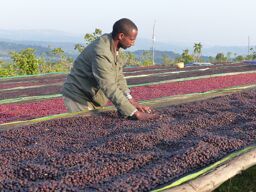
Ahmed Abateman

EDN - Ethiopian Coffee

Habtamu Fekadu Aga
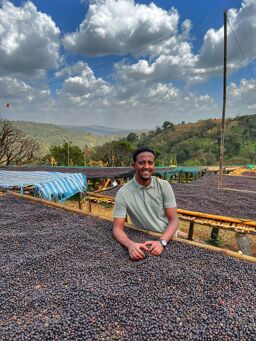
Hambella Flavor
Shonora Coffee
Guji Coffee Export PLC

Guji Highland Coffee Plantation
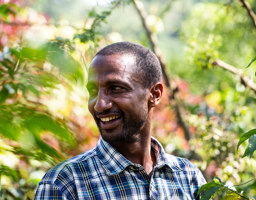
Khalid Shifa

Habtamu Abebe
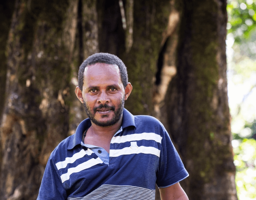
Mesfin Dabessa
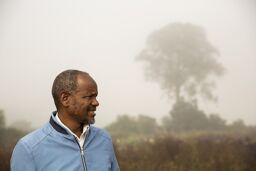
Mustafa Mohamed Ali
Nano Challa Coop
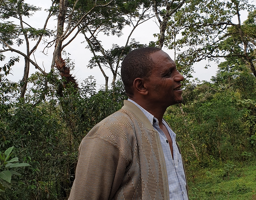
Nazimu Abamecha
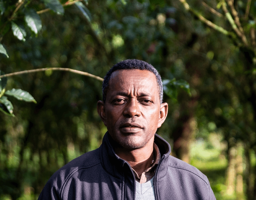
Negusse Tadesse
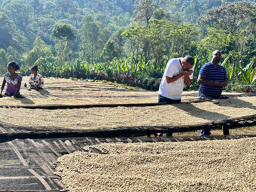
Nibret Alamu
Torban - Coopérative
Kaffees hergestellt in Ethiopia

Determined and passionate about coffee, Nadja Sofian continues her family's work

Coffees from Yirgacheffe, in the Gedeb woreda, are among the best in Ethiopia
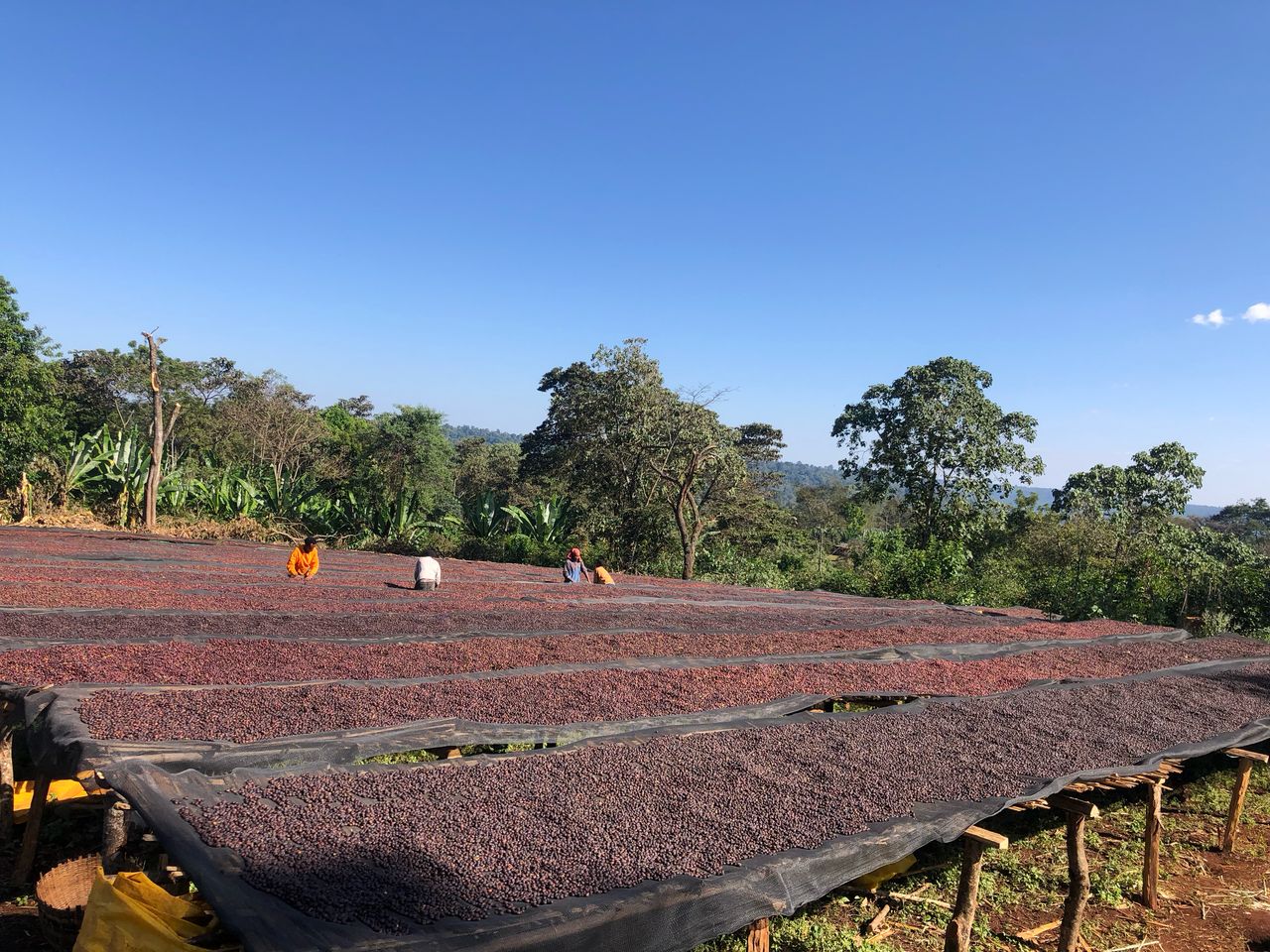
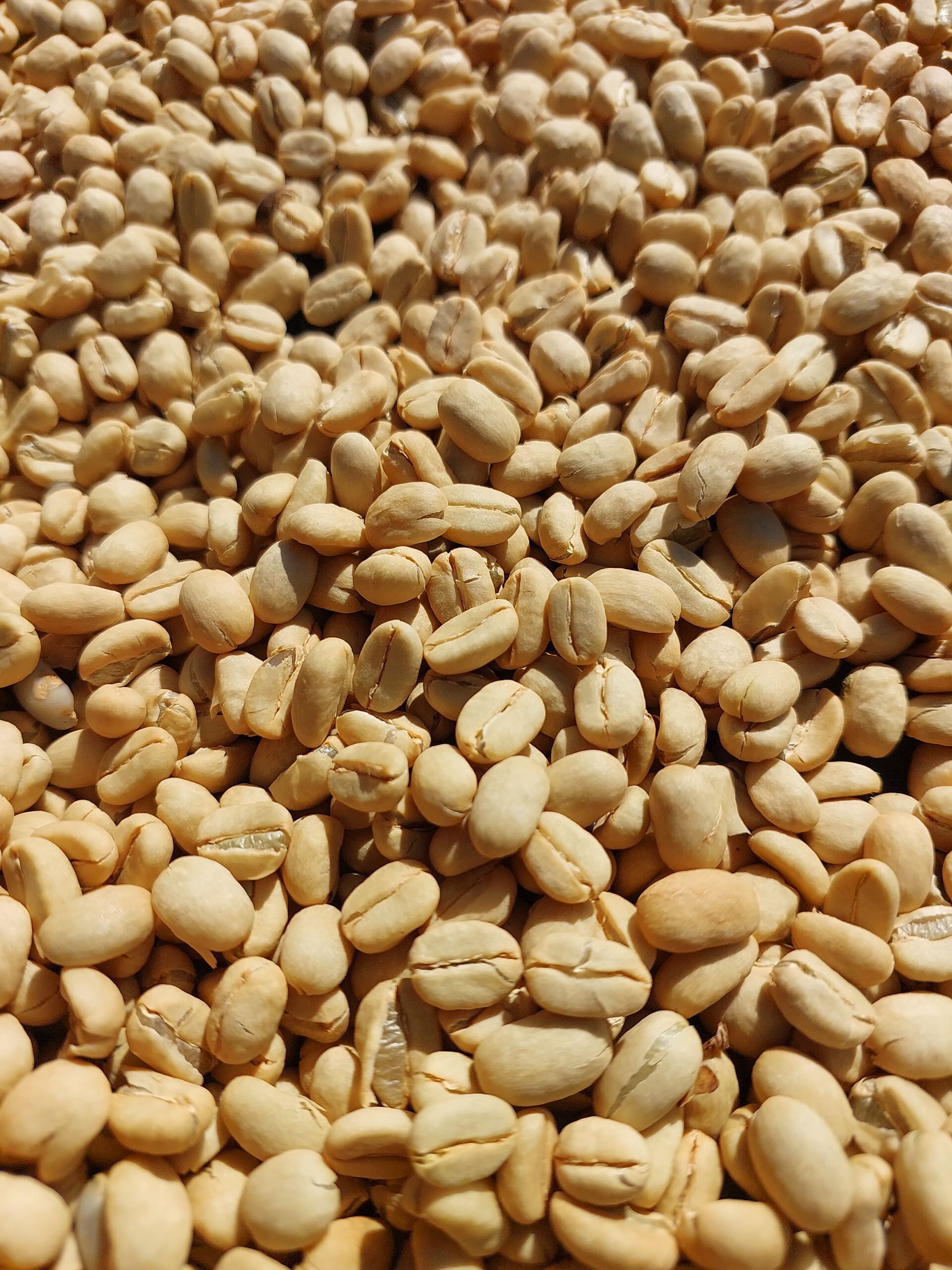
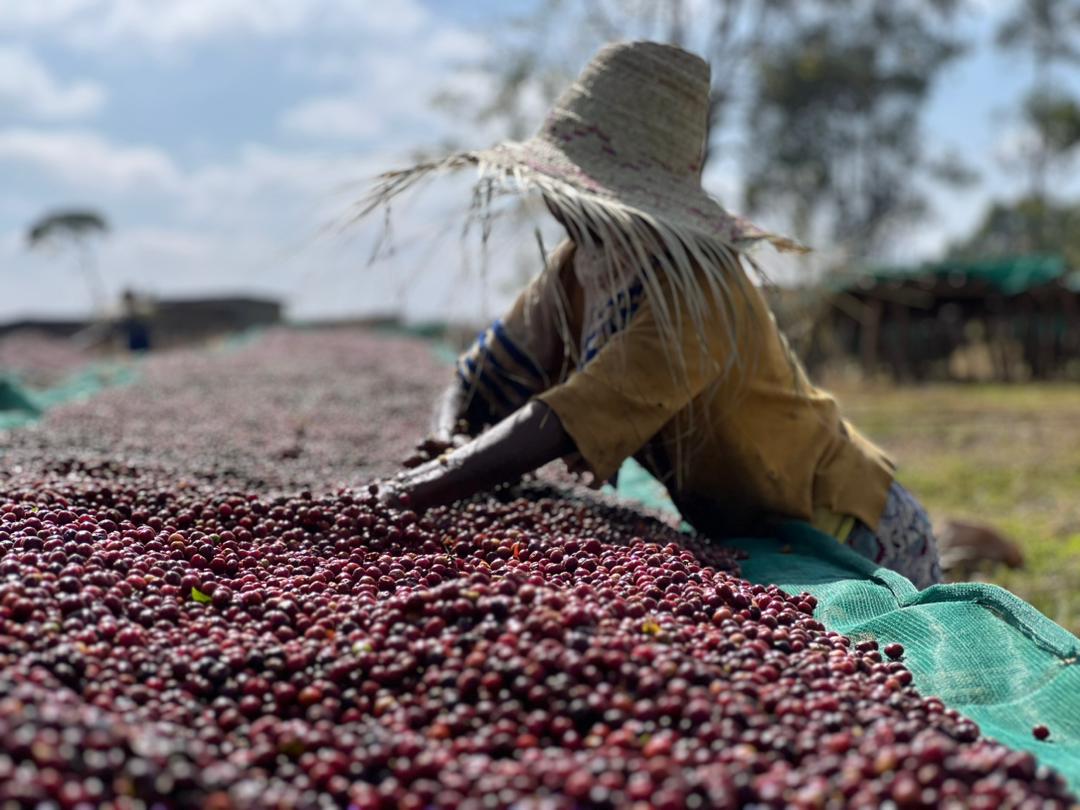
Collected by the four Edema brothers, with whom we maintain excellent relations
Preis nicht verfügbar
Ausverkauft
Preis nicht verfügbar
Ausverkauft



